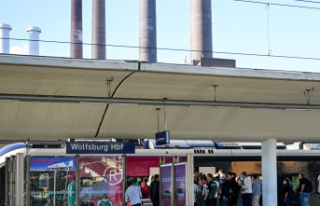Frogs, toads and amphibians depend on moist habitats. But there are fewer and fewer of these. The changing climate is one of the triggers.
Erfurt (dpa/th) - Drought, heat and a lack of insects have triggered amphibian deaths of dramatic proportions in Thuringia this year. "Whole populations of the common frog have now disappeared, only a few specimens have survived," said Ulrich Scheidt from the Nabu State Committee for Amphibian Science of the German Press Agency. Other species such as the sun frog or the common toad would cope a little better with the extreme conditions. But there is no species that does not suffer from the development.
As Scheidt further reported, many of the animals of various species of frogs, toads and amphibians are currently emaciated down to the skeleton. For example, the common frog, which can almost only be found at higher altitudes in the Free State, has little chance of surviving. In order not to dry out, the frog has to bury itself. But then he couldn't find any more food. "In principle, the frog only has two options: either it withers or it starves."
However, the lack of food also affects almost all amphibian species. One reason for this is the decline in the number of insects that has been going on for years.
But it is above all the lack of habitat that causes problems for the amphibians. "Moisture is a rare commodity in Thuringia," said Scheidt. The current situation is a consequence of past mistakes. "Whole landscapes have been drained to enable intensive farming." There has been a "huge loss of grassland" in the past 50 years. "Where can you still find a wet meadow today?"
In order to give the amphibians back habitats, the Nabu Thüringen has started various projects. For example, an old clay pit near Eisenberg (Saale-Holzland district) was acquired in order to create biotopes there. Spawning waters for amphibians are to be created in the Königshofen clay pit. Here, for example, the small water frog, the European tree frog, the crested newt or the spadefoot toad should be offered a new home. The project is funded by the European Union and the state of Thuringia and will run until October.












